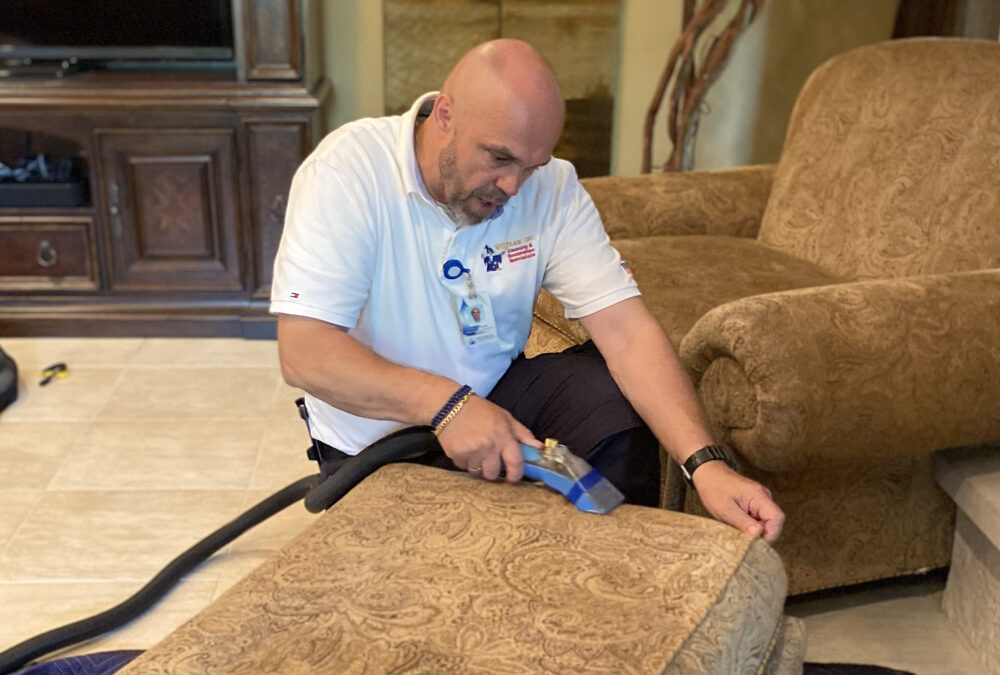Upholstery is a significant investment in a home’s interior design and comfort. Over time, wear and tear, soil, dust, and spills can cause unsightly stains and premature aging. This article provides practical, educational, and informative maintenance tips to help keep your upholstery—from delicate silk and velvet to rugged microfiber and linen—in excellent shape. It covers common stains and treatments, the importance of regular cleaning, strategies to protect your upholstery, and when professional care becomes necessary. By following these guidelines and recommended methods, homeowners or customers seeking upholstery cleaningservices can extend the lifespan of their furniture while maintaining a fresh and inviting interior.
The comprehensive guide integrates proven methods and cost-effective homemade solutions to tackle both minor and challenging stains. The sections below offer step-by-step advice to handle all aspects of upholstery care in a straightforward manner.
Identify Common Upholstery Stains and Their Treatments
Understanding the nature of various stains is essential since different agents require specific treatments. The first step to preserving your sofa, chair, or any upholstered furniture is to recognize common stains and determine the best removal methods.
Learn About Common Stains on Upholstery Materials
Common stains include spills from beverages, food, grease, pet urine, mold, and dirt. Oil-based stains often require solvents or detergents to break down oils without damaging fibers, while water-based stains usually respond to mild soap and water. Different materials—such as leather, suede, microfiber, or silk—have unique cleaning needs. For example, leather might need a special cleaner and conditioner to prevent drying out, and silk requires gentle, cold water extraction and specific agents. Experts advise carrying out a spot test before using any substance over a larger area. In addition to commercial products, household solutions like diluted vinegar or a water-dishwashing liquid blend often work well for fresh stains.
Research Suitable Cleaning Methods for Each Stain
Different stains call for different cleaning techniques. For accumulated dust, a vacuum with a brush attachment is usually sufficient. Stubborn grease or oil stains may need warm water mixed with a small amount of dishwashing soap. Enzymatic cleaners work best for organic stains like pet urine or food spills by breaking down proteins and neutralizing odor. Cleaning methods vary based on fabric type: cold water extraction or steam cleaning is effective on synthetic fibers, while delicate textiles such as velvet or silk require milder methods. Professional cleaning often involves hot water extraction with low-toxicity, pH-balanced detergents that work on multiple fabric types. Understanding both the stain and the fabric helps in choosing the correct method and product, thereby preventing permanent damage.
Use Homemade Solutions for Minor Stains
For minor stains, homeowners can use homemade recipes instead of expensive commercial products. A popular solution mixes one part vinegar with two parts water plus a few drops of dishwashing liquid. This blend cuts through grease and breaks down stains, especially on resilient fabrics like cotton or linen. For tougher marks, adding baking soda can lift stain particles and help deodorize. When cleaning delicate items such as suede or velvet, use minimal moisture and a soft sponge or microfiber cloth. Although homemade cleaners are budget-friendly, results may vary, so always test in an inconspicuous area first.
Understand the Importance of Prompt Stain Treatment
Treating stains promptly prevents them from setting into the fibers, making cleaning less intensive and more effective. Immediate action such as blotting with a clean, absorbent towel and applying the proper cleaning solution can reduce long-term damage. The sooner a stain is addressed, the easier it is to remove, preserving both color and texture. Experts recommend preventing liquids from sitting on upholstery to avoid water damage or mold growth. Prompt treatment is particularly important for pet-related stains or spills like wine or coffee, which can penetrate deeper if left untreated.
Establish a Regular Upholstery Cleaning Schedule
A regular cleaning schedule is key to maintaining the appearance and durability of upholstered furniture. A systematic approach that includes routine quick clean-ups and periodic deep cleaning prevents stains from setting and stops dust and debris from damaging fibers.
Create a Weekly Cleaning Routine to Maintain Upholstery
A simple weekly routine may involve vacuuming the furniture with a brush attachment to remove loose dirt and soil. Doing this every seven days prevents accumulation that leads to deterioration. Use a fabric brush or lint roller to remove particles from crevices and seams. Regular cleaning not only keeps upholstery looking appealing but also minimizes allergens such as pet dander and dust mites. In homes with pets or small children, more frequent cleaning can offer extra protection against stubborn stains.
Incorporate Deep Cleaning Every Few Months
Beyond weekly surface cleaning, a deeper treatment every two to four months is recommended. Deep cleaning typically involves hot water extraction or steam cleaning, which uses high-pressure, low-moisture techniques to thoroughly clean without over-saturating the fabric. Always follow the manufacturer’s guidelines to avoid damaging special materials like silk, leather, or suede or voiding warranties. Periodic deep cleaning removes embedded dirt, neutralizes odors, and refreshes fabric appearance. Keeping a cleaning schedule helps track deterioration trends, enabling timely intervention before small issues become major problems.
Monitor for Signs of Wear and Tear
Regular inspection is vital to detect early signs of wear and tear. Look for changes in fabric texture, discoloration, and fiber depletion like pilling. These signs help determine when further intervention may be necessary, such as reducing use in high-traffic areas or undertaking repairs. Also, examine the cushioning and support structure for sagging or uneven surfaces, which may indicate internal problems requiring professional attention. Early detection can reduce long-term repair costs and maintain both aesthetic and functional integrity.
Note When to Schedule Professional Cleaning Services
Sometimes home cleaning isn’t enough. Professional services may be needed when severe staining, persistent odors, or fabric degradation occurs despite routine efforts. Professionals use advanced machinery and specialized cleaning solutions that can restore fabrics close to their original condition. This option is particularly important for delicate or antique furniture where improper methods might cause irreversible damage. Scheduling professional cleaning at least once a year—or more frequently in heavy-use households—helps extend the upholstery’s lifespan and appearance.
Protect Upholstery From Future Damage
Preventative care is as important as reactive cleaning. Implementing protective measures helps furniture maintain a fresh look and continued comfort, even in busy environments. By applying strategies from fabric protectants to simple household practices, homeowners can significantly reduce stains and slow overall degradation.
Apply Fabric Protectants to Repel Stains
One effective protection method is using fabric protectants. These products create an invisible barrier that repels liquids and prevents dirt and oil from penetrating the fibers. Treated fabrics can resist many common spills, reducing the chance of stains setting in. Application is generally straightforward: spray evenly across the surface, then allow to dry. For best results, reapply every few months, especially in households where spills are frequent. Protectants come in formulations tailored to various materials, from delicate fabrics to those in high-traffic areas.
Invest in Slipcovers for Added Protection
Slipcovers provide a removable barrier between your upholstery and potential damage. They are particularly useful in households with children or pets, as they can be easily laundered without exposing the furniture to harsh chemicals or frequent cleaning procedures. High-quality slipcovers help guard against spills and dirt while updating room decor without replacing the furniture. Choosing durable, machine-washable slipcovers is a cost-effective way to prolong the life of your upholstery and reduce direct wear on sensitive fabrics.
Educate Family Members About Proper Furniture Care
Often, proper care depends on everyone in the household knowing how to handle the furniture correctly. Simple practices like not eating directly on upholstered pieces, blotting spills immediately, and using the right cleaning tools help preserve the fabric. Educating family members—through printed instructions, online resources, or professional consultations—ensures that everyone understands how to prevent accidental damage and maintains a routine of gentle handling.
Plan Regular Maintenance to Prolong Lifespan
Long-term care requires both routine and planned maintenance. Creating a maintenance calendar helps ensure that regular cleaning, reapplication of protectants, and inspections are done on schedule. This proactive approach maximizes the investment value of your pieces and reduces long-term repair costs. By setting reminders for slipcover rotations and routine inspections, homeowners can create an environment where wear is minimized and overall longevity is enhanced.
Recognize Signs That Your Upholstery Needs Professional Care
Even with careful maintenance, there are times when at-home methods are no longer sufficient. Recognizing these signs early can prevent irreversible damage and preserve both the value and safety of your furniture.
Look for Fading or Discoloration in Fabrics
Noticeable fading or discoloration is a sign that professional attention may be needed. Over time, sunlight exposure, repeated cleaning, and normal wear can shift fabric colors. Uneven patches or a general loss of vibrancy that cannot be corrected with a simple clean indicate that the fibers may be breaking down. Professionals use specialized, color-preserving agents and techniques to restore appearance and condition the fibers.
Feel for Changes in Texture or Firmness of Cushions
If your upholstery starts to feel rough, stiff, or uneven, it may indicate that dust, debris, and moisture have built up over time. Such changes in texture or cushion firmness suggest that a deep cleaning is overdue or that the inner padding might be deteriorating. Professional cleaners can determine whether the issue is surface-level or requires more significant repair, thus preventing further damage.
Check for Wear and Tear Indicating a Need for Repair
Visible signs of wear, such as frayed edges, holes, or seams coming apart, are indicators that the fabric’s integrity is compromised. While small tears might be patched, extensive damage typically requires professional repair. A skilled upholstery technician can perform repairs that blend seamlessly with the original material, ensuring that the piece remains both functional and visually appealing.
Schedule Professional Cleaning When Necessary
When home methods no longer restore freshness—if odors persist, discoloration remains, or deep-set stains fail to lift—it is time to enlist professional cleaning services. Professionals use advanced equipment and eco-friendly detergents to treat stubborn stains and thoroughly remove contaminants that could weaken the fabric over time.
Conclusion
Consistent, informed care is crucial for maintaining the longevity and aesthetic appeal of your upholstered furniture. By identifying and treating common stains, adhering to a structured cleaning schedule, and implementing proactive protection measures, you can significantly boost the durability of your upholstery. For expert guidance and professional cleaning solutions, Wiz Team Inc. offers comprehensive upholstery care services. Recognizing when professional assistance is needed and acting promptly helps preserve both function and design integrity. These maintenance tips empower furniture owners to enjoy clean, fresh, and well-preserved upholstery for many years.




